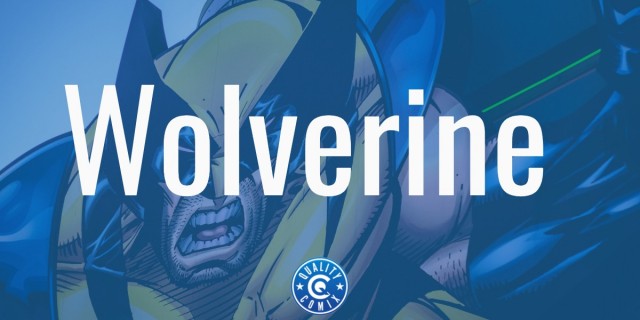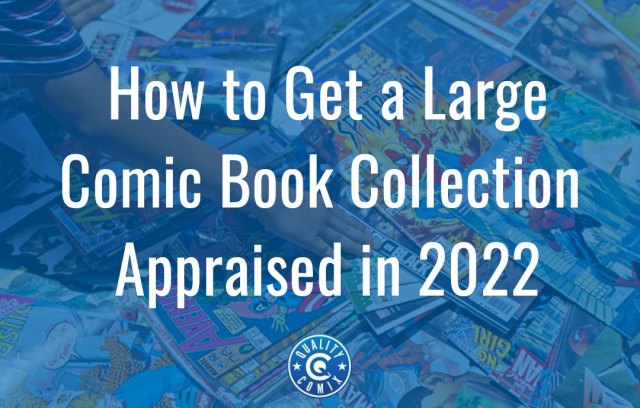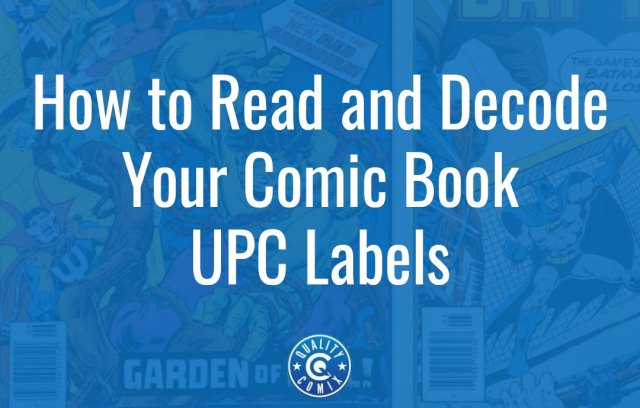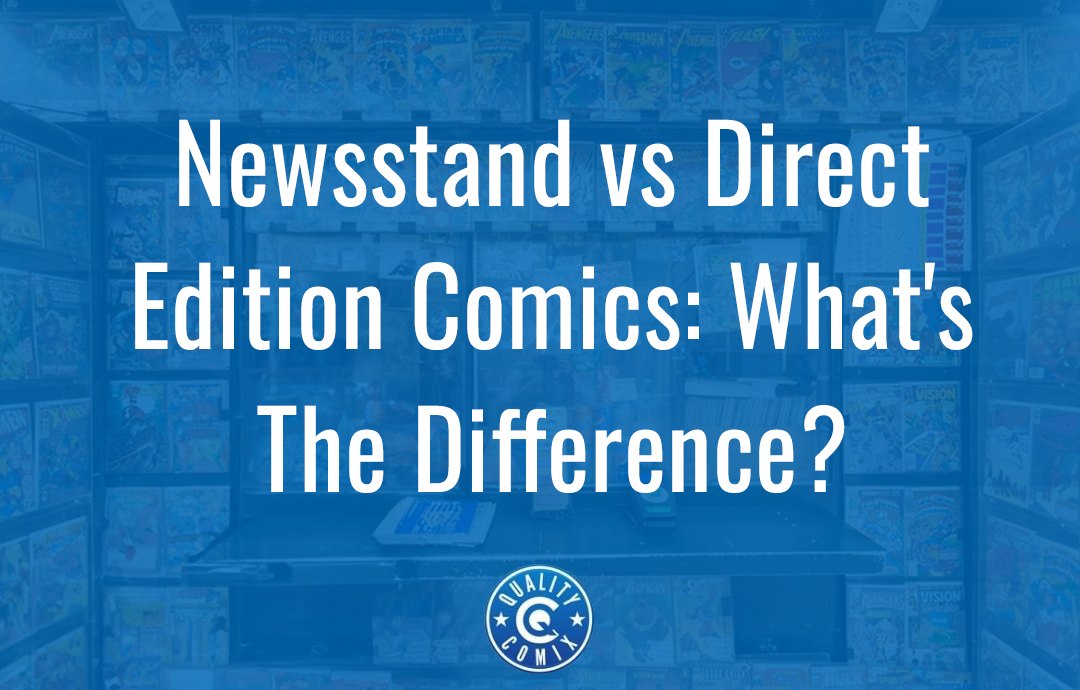
Here at Quality Comix, we try to do a lot to help our fellow comics fans, from the most experienced investors to the freshest faces entering the hobby. Part of that means demystifying and explaining the common terminology that comes up in collecting and investing, particularly when those terms aren't necessarily obvious or self-explanatory.
Other guides we've published include:
- Comic Book Terminology: A Glossary of Comic Book Terms
- The Beginner's Guide to Comic Book Pressing and Cleaning
- Where is the Best Place to Get Your Comics Graded?
And others, of course. Today, we're digging into a specific set of terms and definitions that can make a significant difference to the overall value, desirability, and collectability of a given comic. What is it? The terms are "newsstand" and "direct" editions, and the difference can be anywhere from near-meaningless to incredibly important, depending on the comics.
Table of Contents
How Comics Are Sold
Today, if you want to buy brand-new comics, you have a few options. You can go to your local comic shop and browse the shelves, find comics or trades you like, and buy them. You can also sign up for subscriptions to a particular series you like, and whenever a new issue comes out, it will be delivered to the comic shop for you to pick up later.
You can also frequently just purchase comics from the publishers directly. For example, DC's comic storefront allows you to order new and back issues of comics quickly and easily, though they certainly don't have everything they've ever published.
Alternatively, if you're just in it to devour the stories and don't much care about the physical books or the investment potential, digital editions of virtually every comic ever published are available through platforms like the Amazon-owned Comixology storefront.
The point is that there are a ton of different ways to buy and enjoy comics, both new and old, in today's market. But that wasn't always the case.
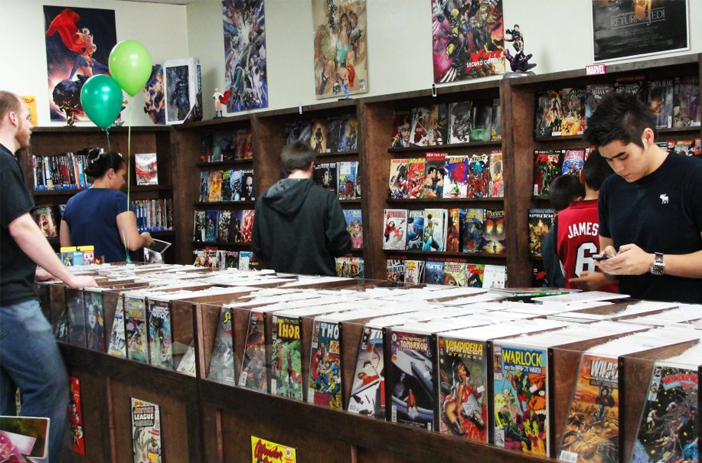
Image source: https://www.aimmailcenters.com/visit-your-local-fountain-valley-comic-shop
Decades ago, before we had the internet for comics, online storefronts, and digital editions, the world was a very different place. In fact, one of the first sentences of this section didn't even apply. Local comic shops were unheard of.
Back then, comics didn't have the prestige or the budgets behind them that they do now. They were sold at bookstores, corner stores, pharmacies, and newsstands, the likes of which are almost never even seen today outside of the very same media we're discussing. They were shelved alongside penny dreadfuls and dime novels of questionable quality and value.
This is also part of why older comics are so valuable. Not only were they treated as a fringe impulse-buy sort of product, but they were also considered disposable. People would use them as kindling for fires, as coloring pages and activity books, as material for arts and crafts, and much more. So many older comics are valuable because of the scarcity inherent in something that old, fragile, and largely not respected as a valuable piece of media.
But let's go back to how they were sold for a moment. Comic publishers would print their comics by the thousands and sell them to vendors like newsstands. The newsstands, then, could sell them or not; it didn't matter to the publishers beyond the fact that a newsstand failing to sell enough would mean they'd order less next time around.
Moreover, vendors could simply return their unsold merchandise for a partial refund if it didn't sell. This is another reason for scarcity; unsold comics were returned and often destroyed, further decreasing the number of copies available.
Comic publishers didn't care much for this model. There was always uncertainty about sales figures, and the need to pay out those refunds put a damper on budgeting and reinvesting the profits of a run's sales.
Changing the Model
As comics grew more and more popular, as they shifted from a pharmacy endcap product to a bookstore shelf product, and as more and more dedicated comic stores opened up, the comic publishers wanted two things. First, they wanted to be able to sell comics to people who didn't have the opportunities to visit local stores and buy them. Second, they wanted to find a way to get rid of the refunds for unsold merchandise.
Enter direct sales.

Image source: https://farm8.staticflickr.com/7422/11922822425_3beb7edf00_o.jpg
Direct sales were comics sold to the comic stores (and, later, directly to customers) that were unable to be returned. For comic vendors, that meant being able to buy the comics at a discount to make up for the inability to get a refund on the comics they didn't sell.
Over time, this model evolved into what we have now, which is a muddied mix of a wide range of different purchasing options to suit different needs.
For a while, though, there were only two versions: newsstand and direct.
How Newsstand and Direct Editions Differ
All of this is great in theory, but what's the actual difference between the two editions of a comic?
Well, the comic publishers needed a way to be able to identify the difference between a comic they had to accept for a refund and a comic they didn't.
At the time, comics were largely tracked via barcodes, the familiar UPC boxes we see on pretty much everything today. Direct editions, though, made modifications to the barcodes. Early direct editions had a simple strike-through line across the barcode, indicating that it wasn't eligible for a return. Others would replace the barcode entirely with a symbol, like Spider-Man's face, or even remove it entirely to show more of the cover art behind it.
Eventually, though, barcodes came back in style. This happened for a few reasons. For one thing, publishers could just print two different barcodes, each tracked in a different way with a different meaning. This was easier for machines to separate the two, whereas before, it was easier for human workers to distinguish between editions.
Later, barcodes would allow for further differentiation. Some comics have multiple different covers, both for direct and for newsstand editions, so much so that there could be a dozen or more different variants. Barcodes could keep a more-or-less uniform look across them but with unique numbers for each variation, allowing for better sorting.
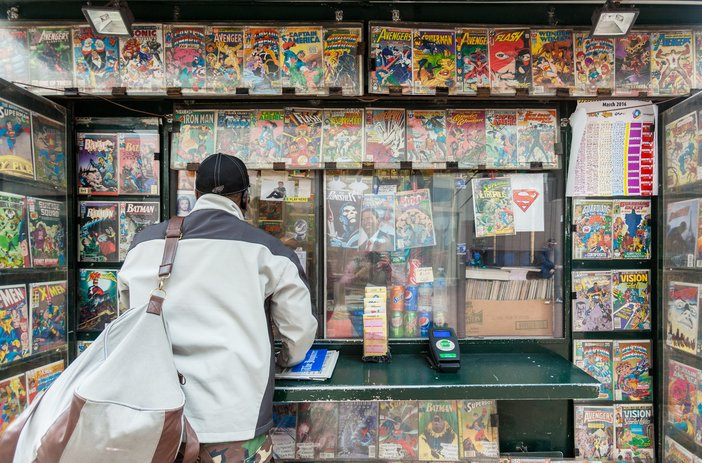
Image source: https://www.phillyvoice.com/twin-brothers-turn-comic-books-enliven-their-newsstand-business/
Most of the time, the main difference between a direct and a newsstand edition is the barcode. Sometimes, it's just a different number or format for the barcode, sometimes, it's the presence or absence of a barcode, and sometimes, it's more dramatic. But that's not always the case.
In some instances, one edition might have been published with more significant differences. Since they would be entire linear print runs of one then the other, you might have cases where all of the direct editions are fine, but all of the newsstand editions have a color error, a miscut page, or even a different kind of paper for the cover. This was occasionally used for comics mailed directly to consumers, as a stronger cover would protect it better from the rigors of the postal service, whereas newsstand versions shipped in boxes of hundreds wouldn't need that kind of protection.
One thing to note is that this is all within a particular era, mostly in the bronze/copper/early modern ages. Comics published later are more clearly identified, and the variations often matter less, while comics published earlier didn't even have barcodes most of the time, and variants weren't really a thing. When you're dealing with older comics, there are other ways to identify the value of a book.
Which is More Valuable: Newsstand or Direct Editions?
As collectors and investors, a big question you'll have is which kind of comic is more valuable between the two. Which has more prestige, which looks better, which is rarer?
Unfortunately, there's no answer to this question for one simple reason: it varies for every single comic to have more than one edition.
Sometimes, one edition will be more valuable than the other due to paper quality, meaning that one is harder to find in pristine condition.
Sometimes, one simply looks a lot better than the other and is thus more desirable.
Sometimes, print runs mean that one edition is much more common. For example, in 1979, 94% of the copies of Marvel comics printed were newsstand copies, so direct edition copies are 10x rarer and harder to find, which generally equates to value. This varied by publisher, by year, and even, in some cases, by geographic location.
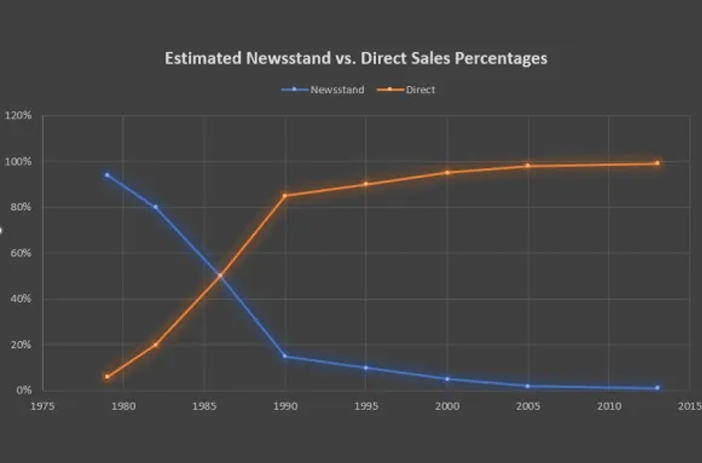
In broad strokes, whichever version of a comic is rarer is the more valuable one. Barring that, it's usually a matter of condition, visual appeal, and other details. For many comics, particularly among the lower-value comics and non-key issues, the difference between editions might be only a few dollars.
All of this means that the first thing you need to do is your research. Pick a comic you're interested in buying, and check to see if there are variants of that comic you should pay attention to. When finding a copy to buy, learn how to identify the different editions at a glance, know which ones have which values attached, and decide which one you want.
Beyond the Barcode
The barcode is a primary indicator of the difference between editions of a comic, but it's not the only detail worth knowing.
Barcodes can have significant information beyond just whether a comic was a direct edition or a newsstand edition. One common variant for certain valuable comics is actually regional variations.
At various points throughout history, comic publishers have tried experimenting with different markets. Generally, they had two experiments:
1. Will this market be interested in comics at all?
This was generally indicated by special barcodes but otherwise identical comics, except for certain details, like the currency used in the price of the book. Regional variants are generally rare because they were printed in smaller numbers as a test market, and if they didn't catch on, there may only be a few issues printed for that market at all.
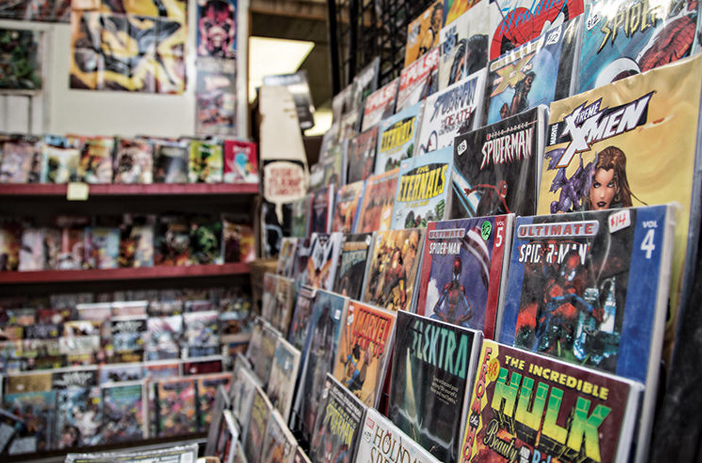
Image source: https://columbiachronicle.com/7b2e8ef8-63f7-11e5-aaae-9f02c9973aee
The other experiment was more common:
2. Will customers still buy at a higher price?
Each time in the early days, when comics were eyeballing a higher price point, they usually tested it out in limited markets, such as specific cities in New England or the West Coast. These regional variants would have a higher price than the same comic found elsewhere.
Nowadays, this wouldn't fly; if you tried to sell a comic for $1 more in New York than you did in L.A., people would just buy the L.A. version online. But back when people didn't know there was even a market test happening (except maybe a few people on the fringes with multiple vendors to check), it was easier to pull these tests.
Identifying Specific Editions of Comics
So, say you have an issue of a comic. You know this comic has multiple variations, but you're not sure which version you have. How do you identify it?
Luckily, in today's modern era, there are a lot of tools to help you out. Primarily, there are communities and resources packed full of experts willing to offer their knowledge. Generally, the first thing you do is find a page for the comic on a site, whether it's a CGC forum board, a Reddit, or something more like a comic wiki.
Then, you just check the details. Sometimes, it's obvious, with completely different art on the cover. Other times, it's subtle, like a small detail on the cover or a different number in the barcode. Identifying it can sometimes be tricky, so a good picture of the cover can help a lot.
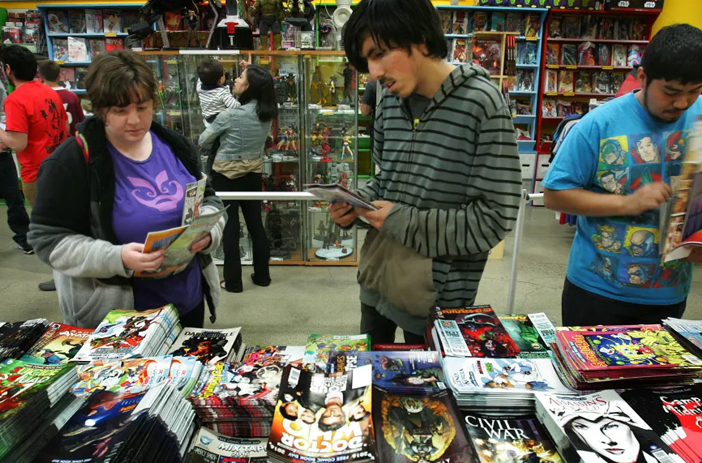
Image source: https://www.ocregister.com/2017/04/28/brainiac-wants-to-get-nerdy-with-you-for-star-wars-and-free-comic-books/
You can also talk to experts like us. We're passionate about comics, we have decades of experience, and we love to help out people looking to buy, sell, or even just ID their comics. All you need to do is contact us about your comics, with pictures and descriptions of what you're talking about, and we'll do our best to help you out. And if you ever have any questions about comics, in general, please feel free to let us know! We'll gladly assist you however we can.

